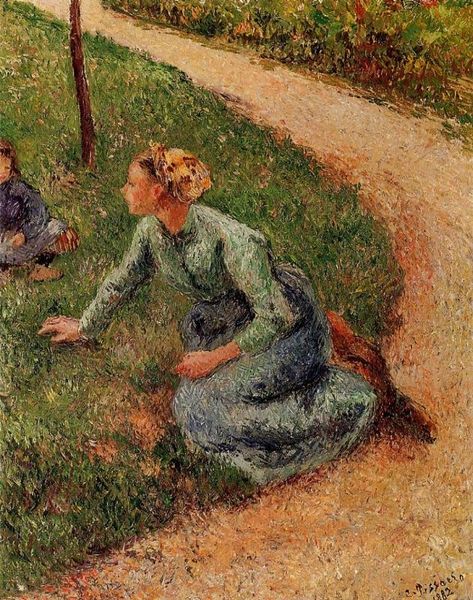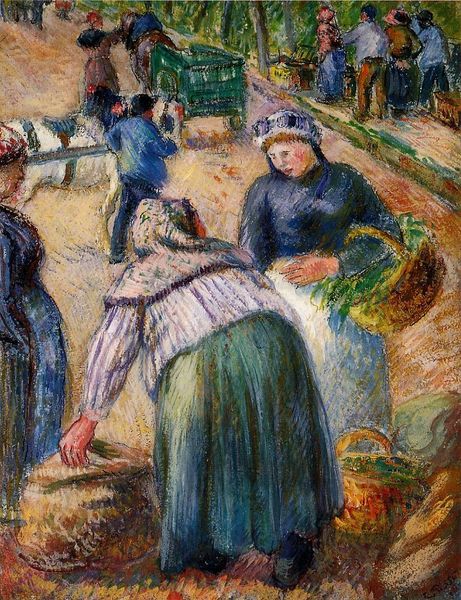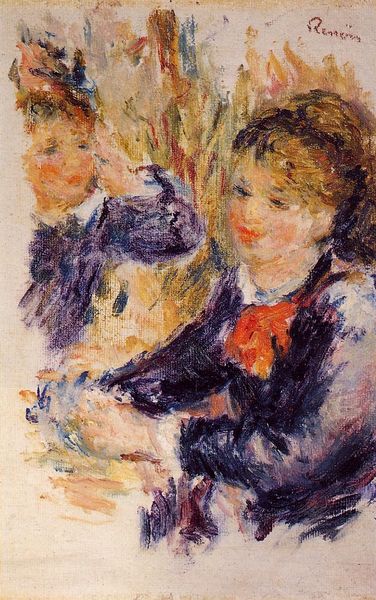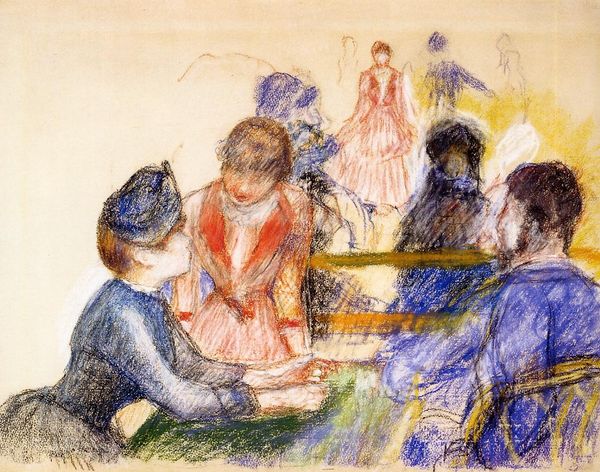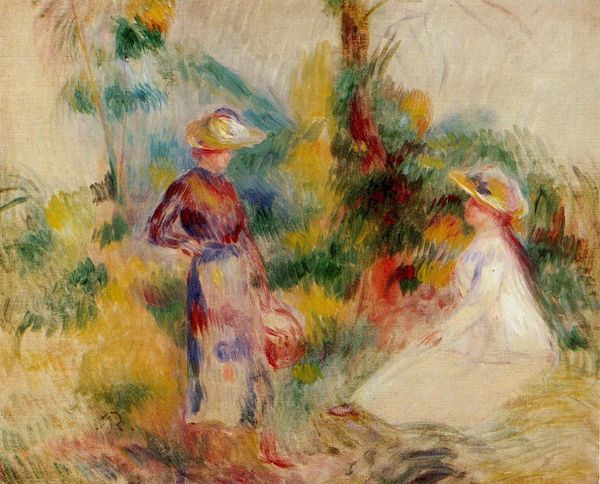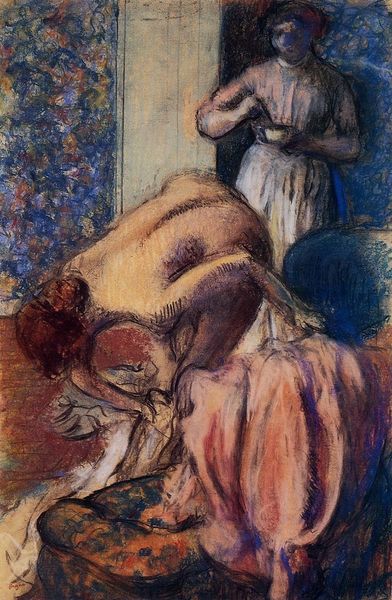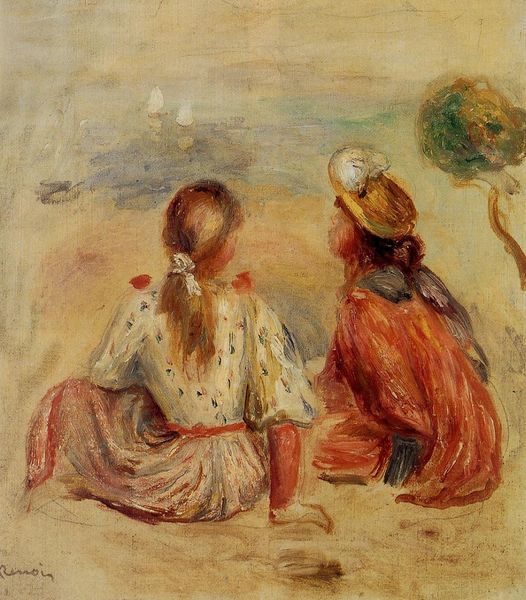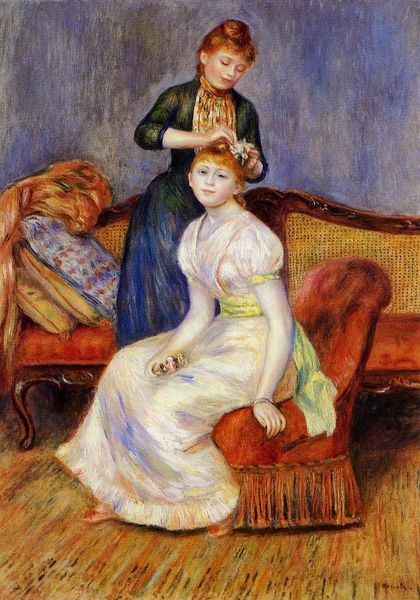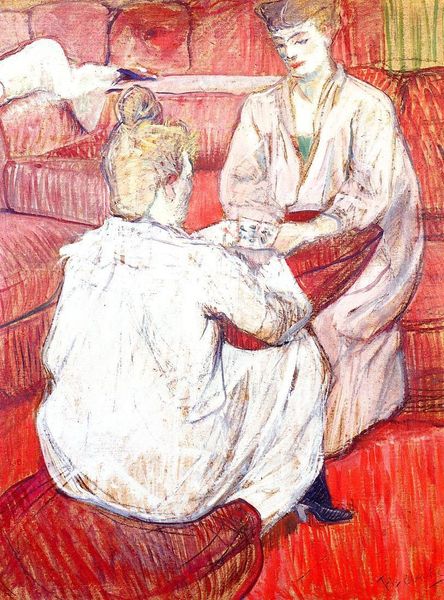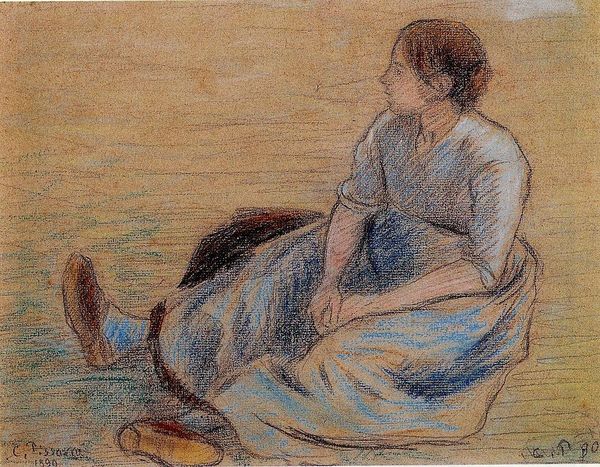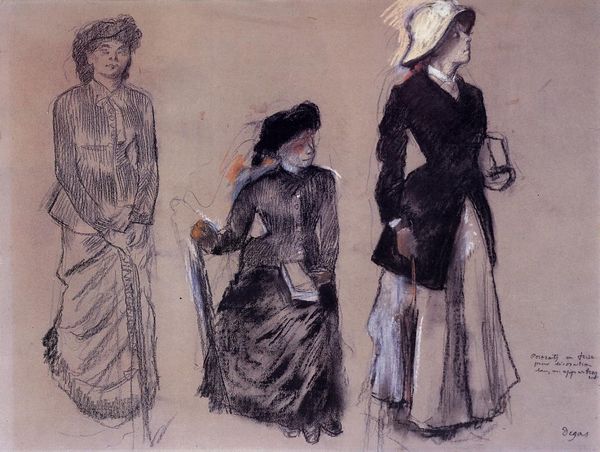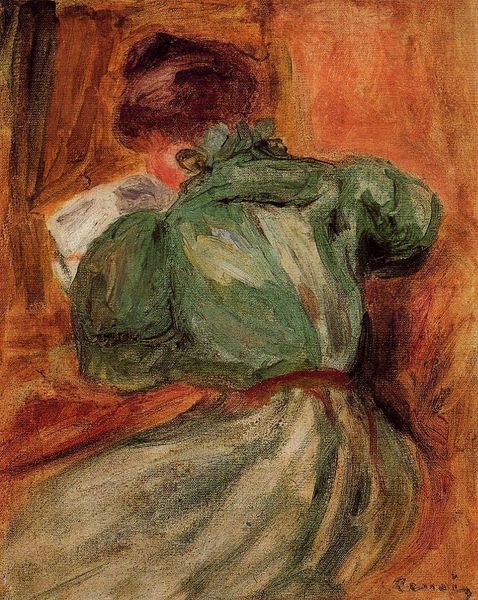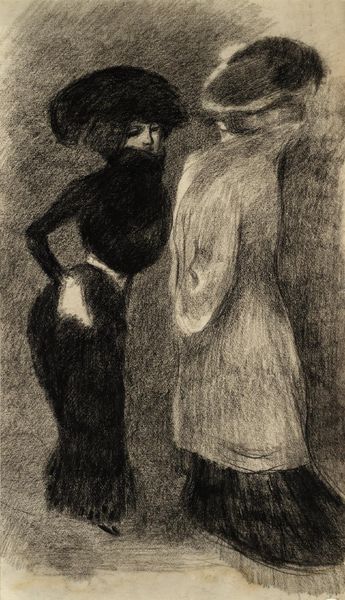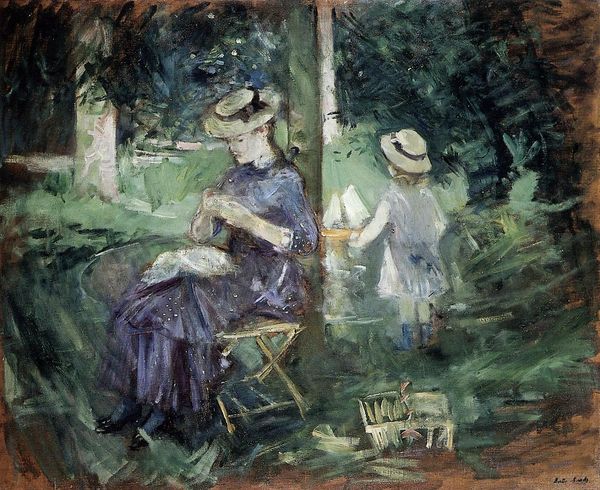
Copyright: Public domain
Editor: This is Camille Pissarro’s "Seated Peasant and Knitting Peasant," a coloured-pencil drawing from 1893. There’s a beautiful stillness to it, even though it feels unfinished. The colors are muted, but somehow luminous. What draws your eye when you look at this? Curator: I’m immediately struck by the circularity, both visually and conceptually. Look at how the two figures mirror each other’s seated posture, creating a visual echo. Their gestures are internalized; each seems lost in contemplation or labor. It begs the question, what narrative weight does the act of ‘knitting’ bear in representing the feminine experience, historically? Editor: That’s interesting, I hadn’t considered the symbolism of the knitting. Curator: Knitting, spinning, weaving…these are historically coded activities. Consider Penelope in Homer’s Odyssey, using her loom to stave off unwanted suitors. It's a powerful symbol of patience, domesticity, but also subtly, of agency within limited societal roles. Pissarro perhaps saw the inherent dignity, the strength, in these everyday actions. Do you sense that in the work? Editor: Definitely. I initially saw it as just a snapshot of rural life, but I see now that there's more depth there. The woman knitting isn't just performing a task; she is embodying something. Curator: Exactly! These images offer an intimate look into the rhythms of life of the rural working class. Notice too how their clothing acts almost as a uniform connecting them. The seated woman's blue recalls the dress of the other. Editor: So, it's not just a portrait, but also a comment on a way of life, perhaps? I am seeing many layers in this seemingly simple scene! Curator: Indeed. Pissarro encourages us to contemplate their roles and significance and find the echoes of those symbols still resonant today. This has been really illuminating!
Comments
No comments
Be the first to comment and join the conversation on the ultimate creative platform.
